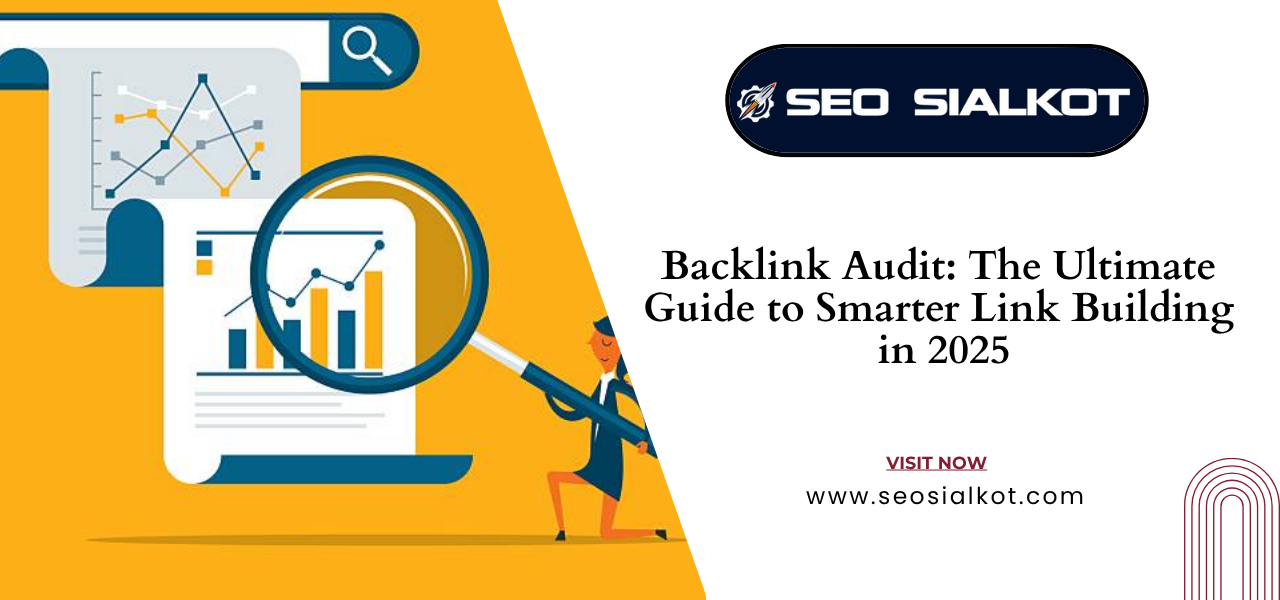Backlink Audit: The Ultimate Guide to Smarter Link Building in 2025
Backlinks are the backbone of SEO, but not all backlinks are good for your website.
In 2025, where AI-driven search engines and LLMs (like ChatGPT) influence how users discover brands, having clean, authoritative backlinks is more important than ever.
This is why backlink audits are crucial.
In this guide, you’ll learn:
-
- What a backlink audit is
-
- Why it’s essential in 2025
-
- The best tools to perform a backlink audit
-
- How to check backlink quality
-
- Step-by-step backlink auditing using Semrush
-
- Key FAQs to make your link-building strategy future-proof
Let’s dive in.
What is a Backlink Audit?
It is the process of analyzing all the backlinks pointing to your website to evaluate their quality, relevance, and potential SEO impact.
Not all backlinks are created equal:
-
- High-quality backlinks from trusted, relevant sites can improve your rankings
-
- Toxic or spammy backlinks can damage your SEO and even cause Google penalties
A proper backlink audit helps you:
-
- Identify harmful links that need to be removed or disavowed
-
- Understand which backlinks bring real authority
-
- Plan new link-building opportunities for sustainable growth

Why Important in 2025
In the past, SEO was mainly about collecting as many backlinks as possible.
But in 2025, quality and context are what matter most because:
-
- AI-powered search engines like Google SGE, ChatGPT, and Perplexity prioritize brand authority and co-citations
-
- Spammy or irrelevant links can lower your trustworthiness in both traditional SEO and AI search
-
- User intent and topic association have become ranking signals
In short:
A backlink audit is your first step to protecting your website, building authority, and preparing for AI-driven SEO.
CTA SEO: Turning Backlink Audits into Conversions
A backlink audit doesn’t just improve your search visibility — it can also boost your CTA SEO.
When your website ranks higher with clean and relevant backlinks, your calls-to-action (CTAs) get more clicks. Here’s why:
-
- Higher Visibility = More Traffic
A proper backlink audit increases organic traffic, which naturally improves the performance of your CTAs.
- Higher Visibility = More Traffic
-
- Authority Builds Trust
Visitors are more likely to respond to your CTAs when your website appears credible and authoritative in search results.
- Authority Builds Trust
-
- Targeted Backlinks Bring Qualified Leads
Backlinks from relevant sites drive high-intent visitors, making your CTA SEO more effective.
- Targeted Backlinks Bring Qualified Leads
What is the Best Tool for Backlink?
To perform a proper backlink audit, you need a reliable SEO tool. Here are the best tools in 2025:
-
- Semrush Backlink Audit Tool (Highly Recommended)
-
- Detects toxic backlinks automatically
-
- Monitors your backlink profile health
-
- Provides disavow file generation for Google
-
- Integrates with Google Search Console for accuracy
-
- Semrush Backlink Audit Tool (Highly Recommended)
-
- Ahrefs Site Explorer
-
- Powerful backlink index
-
- Shows anchor text distribution and referring domains
-
- Great for competitor backlink analysis
-
- Ahrefs Site Explorer
-
- Moz Link Explorer
-
- Focuses on Domain Authority (DA)
-
- Highlights spam score for risky backlinks
-
- Moz Link Explorer
-
- Google Search Console (GSC)(Free)
-
- Lists all backlinks detected by Google
-
- Limited in detail, but useful for a quick overview
-
- Google Search Console (GSC)(Free)
Pro Tip:
For a complete backlink audit, combine Semrush for toxic link detection with Ahrefs for competitor research.
How to Check Backlink Quality
When auditing backlinks, the goal is to separate good links from bad links.
Here’s what defines high-quality backlinks:
-
- Come from relevant and authoritative websites in your niche
-
- Use natural anchor text (no keyword stuffing)
-
- Are placed contextually within content (not in footers or spammy blogrolls)
-
- Drive referral traffic or brand mentions
Toxic or low-quality backlinks usually:
-
- Come from spammy or unrelated websites
-
- Have unnatural anchors like “cheap product” or foreign characters
-
- Are part of link farms or private blog networks (PBNs)
-
- Exist on pages with no traffic or low authority
Step-by-Step Backlink Quality Check
-
- Export your backlinks from Semrush or Ahrefs
-
- Review the domain authority / authority score
-
- Check anchor text relevance
-
- Identify spammy TLDs or irrelevant countries
-
- Flag suspicious or irrelevant links for removal

How to Do a Backlink Audit in Semrush
Semrush offers one of the most powerful backlink audit tools for 2025.
Here’s how to do it step by step:
Step 1: Set Up Your Project
-
- Log in to Semrush
-
- Go to Backlink Audit Tool
-
- Create a new project using your domain
Step 2: Connect Google Search Console
-
- This ensures Semrush fetches your complete backlink profile
-
- Click Connect GSC and authorize
Step 3: Run the Backlink
-
- Semrush will scan all backlinks and assign a Toxicity Score
-
- Links are categorized as Toxic, Potentially Toxic, or Non-Toxic
Step 4: Review Toxic Links
-
- Check the toxic score, referring domain, and anchor text
-
- Prioritize links from spammy, irrelevant, or high-risk domains
Step 5: Remove or Disavow
-
- First, try to contact the site owner to remove the link
-
- If not possible, add the links to a disavow list
-
- Export your disavow file and submit it to Google Disavow Tool
Step 6: Monitor and Repeat
-
- Backlink audits should be done every 2–3 months
-
- Set up email alerts in Semrush for new toxic backlinks
Bonus: Tips for Building a Clean Backlink Profile in 2025
-
- Focus on Relevance Over Quantity
-
- A single contextual backlink from an authority site is better than 50 random links.
-
- Focus on Relevance Over Quantity
-
- Earn Co-Citations and Brand Mentions
-
- Even unlinked brand mentions help AI tools and Google trust your brand.
-
- Earn Co-Citations and Brand Mentions
-
- Create Linkable Assets
-
- Free tools, templates, data studies, and guides attract organic backlinks.
-
- Create Linkable Assets
-
- Monitor Your Competitors
-
- Use Ahrefs or Semrush to see where competitors are earning their best links.
-
- Monitor Your Competitors
-
- Combine Backlink with Ongoing Outreach
-
- Regularly remove bad links and focus on earning new high-quality backlinks.
-
- Combine Backlink with Ongoing Outreach
Frequently Asked Questions (FAQs)
1. What is a Backlink Audit?
A backlink audit is the process of analyzing all links pointing to your site to find quality backlinks that help SEO and toxic links that can harm rankings.
2. What is the Best Tool for Backlink Audit?
Semrush Backlink Audit Tool is the most comprehensive tool in 2025, followed by Ahrefs, Moz, and Google Search Console.
3. How to Check Backlink Quality?
Check the domain authority, anchor text relevance, traffic, and spam score of the linking site.
High-quality backlinks are contextual, authoritative, and relevant.
4. How to Do Backlink Audit in Semrush?
Create a project in Semrush, connect GSC, run the audit,
identify toxic backlinks, and remove or disavow them to protect your SEO.
5. How Often Should I Do?
At least every 2–3 months to ensure your website maintains a clean and authoritative backlink profile.
6. Can a Backlink Audit Improve My Rankings?
Yes! Removing toxic links and strengthening your link profile improves both Google rankings and AI search visibility.

Conclusion
A backlink is no longer optional — it’s mandatory for modern SEO in 2025.
By regularly auditing your backlinks, removing harmful links, and focusing on high-quality link building, you:
-
- Protect your site from penalties
-
- Boost rankings in Google and AI search
-
- Build lasting authority and visibility
Start your backlink audit today and prepare your website for the future of SEO.

